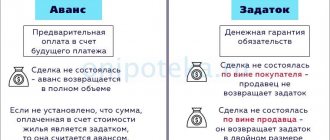Not everyone is approved for a mortgage and not always. But there is no need to panic and be afraid of the “black list” of banks (that they will no longer give a housing loan). Experts advise to understand the reasons for the refusal, analyze the situation and try to get what you want a second time. Read more in the material.
The first step is to understand why you were rejected. As a rule, banks do not disclose the true motives for not issuing a mortgage, however, as Ivan Iutin, managing partner of Iutin, Belousova and Partners, notes, there are a number of “standard” reasons for this.
- Credit history of the borrower (guarantor). Delays or evasion of loan payments, litigation under loan agreements lead to a damaged credit history, and, consequently, to an increased likelihood of refusal on subsequent applications.
- Insufficient income of the borrower. Banks analyze whether the borrower's monthly income is enough to repay the mortgage payment and cover all necessary living expenses.
- High financial burden of the borrower (he has existing loans) . The bank may consider that the borrower will not be able to regularly repay all of his loans along with the mortgage.
- Inaccuracy of information in the mortgage application. In this situation, we are talking about both banal errors in filling out the application and deliberate distortion/concealment of any information. In the second case, according to Ivan Iutin, the borrower will face a 100% refusal: bank employees check the data thoroughly.
One more moment
It often happens that a person does not meet the requirements of this particular bank (citizenship, age, work experience, registration). In this case, it is worth looking for a program with less stringent conditions. You can find out about them on the organization’s website. However, it is recommended to check this list before submitting an application, since its components often change.
“The largest credit institutions with state participation have quite high requirements - only the “white” salary and work experience at the last place of work of at least six months are taken into account; In addition, these banks check your credit history extremely carefully, and may ignore the presence of valuable collateral or a reliable guarantor. Many banks from the second or third ten of the national rating can offer programs no worse, and their requirements will be lower (for example, work experience of 3 or even less months),” says Sales Director of Seven Suns Development Alexey Bushuev.
By the way, if you plan to purchase an apartment in a new building, the pool of banks is only conditionally limited to those that have accredited the project. In the event that all banks lending to buyers of this residential complex have refused, the borrower can privately contact another bank, where he received preliminary approval for a mortgage, with a request to consider the new building he has chosen. Not often, but still sometimes it leads to success, says Alexey Bushuev.
Mistake 2. Quickly signing a mortgage agreement
Very often, when applying for a mortgage, managers insist on signing the agreement as quickly as possible. They argue that in just a few days the conditions may change and the price will rise, so it is very important to sign an agreement right now and with the specific bank with which the company cooperates. This is done so that the client does not have time to familiarize himself with the conditions and offers of other companies.
It is better to pay attention to different offers in different banks, analyze all the details and choose the most suitable option yourself. Don’t be afraid that after a couple of days the moment will be missed and you won’t be able to conclude a profitable deal. These are just advertising ploys by managers. To learn how to buy an apartment so as not to make mistakes, read the article at the link.
What to do?
If you are refused a home loan by one bank, you can and should contact others. But you shouldn’t do this right away.
“Lending institutions will see multiple requests for credit and assume that you have financial problems. And after three refusals, your applications will not be considered for a month or even longer. Therefore, first figure out what the reason for the refusal is, eliminate the obstacle, and only then send the application a second time,” Mikhail Chernov, CEO of Refin.online, shares his experience.
What mistakes are made when applying for a mortgage?
There are several common mistakes, and to avoid them, when applying for a mortgage you need to take into account many nuances: choose a bank not only based on the interest rate, take into account hidden fees (of which there can be an impressive number).
The following mistakes are made quite often:
- choose the wrong type of repayment;
- do not refinance the mortgage;
- do not apply for a property tax deduction;
- do not try to repay the loan in the first half of the mortgage term;
- do not use special government programs;
- apply for a loan in foreign currency.
Let's look at everything in more detail.
Selecting a payment type
When applying for any loan, you have the opportunity to choose the type of monthly payment, if the bank stipulates this under the terms of the agreement. A similar opportunity exists when applying for a mortgage. You can choose annuity or differentiated payment.
Annuity payment
– a payment whose amount does not change throughout the entire loan term.
Differentiated payment
– a payment, the size of which varies depending on the balance of the loan debt.
In other words, with an annuity repayment system, the borrower will pay the amount specified in the loan agreement throughout the entire loan term. In most cases, banking institutions offer just such a payment system. It is beneficial to the bank, but not to the client, who overpays a fairly significant amount
over a 15-20 year mortgage term.
A differentiated payment system allows you to save money. The fact is that in the process of repaying the loan, its amount decreases, and interest is calculated on the balance of the debt. Consequently, the monthly payment amount decreases, and the overpayment also decreases.
However, with a differentiated system, the first payments will be larger in amount
than when choosing the annuity method (since interest is charged on the entire outstanding loan amount).
Refinancing
This program is a refinancing program. That is, issuing a new loan on more favorable terms for the client. For example, the borrower took out a mortgage at 10.2% per annum. Within a year, mortgage interest rates dropped. It amounted to 9.6% per annum, but the client continues to pay the mortgage at the previously established rate.
The refinancing program allows you not only to reduce the size of your monthly payment, but also, in some cases, to receive additional money in cash
for your own needs.
To refinance a loan, you need to obtain permission from the bank
in which it is framed. Unfortunately, not all credit institutions are ready to give such permission. It is not profitable for them if the client quickly repays his debt, especially if the borrower wants to refinance the loan with another bank.
Receiving a deduction
Citizens who purchase housing with a mortgage have the right to receive a property deduction. What is he?
Property deduction
– refund of personal income tax in the amount corresponding to the payment amount.
In other words, if personal income tax was regularly paid from the borrower’s income in the amount established by law, these amounts can be returned. But there are also maximum return limits.
Only officially employed citizens can apply for a property deduction, from whose income employers transfer income tax on a monthly basis. A personal income tax refund is received not only for paying interest on the mortgage, but also for expenses related to the cost of real estate. The maximum limit is 2,000,000 rubles, even if the property is more expensive. That is, the borrower can return 390,000 rubles in real money
from the paid personal income tax back.
You can submit documents for a personal income tax refund (property deduction) directly through your employer. If for some reason he cannot complete it, you can submit documents for deduction yourself. To do this, fill out the 3-NDFL declaration.
To apply for a tax deduction, you will need the following documents:
:
- borrower's passport;
- certificate of income from place of work (2-NDFL);
- a copy of the loan agreement (mortgage);
- a certificate from the bank about the amount of interest on the loan;
- application of the established form.
Repaying the mortgage in the first half of the term
Many people try to close the loan as quickly as possible only at the end of the loan period. It is not right. The fact is that the maximum amount of interest paid
for a mortgage it is established precisely in the first months and years.
That is, during this period the borrower mainly repays not the body of the loan, but bank interest for the entire period for which the loan was issued. It is for this reason that it is better to close your mortgage at this time.
And if possible, refinance it on more favorable terms.
Government programs
If possible, we should use them. For example, families with 2 or more children (if the last child was born after 2020) can get a mortgage at a lower rate.
Large families
(in which there are 3 or more children, and the last one was born in 2020 or later) can receive a one-time payment of up to 450 thousand rubles to repay the mortgage loan.
The state also provides them with subsidies and various benefits. In addition to them, other categories of citizens approved by law can count on more favorable mortgage lending conditions.
Registration of a mortgage in foreign currency
A common mistake. Many borrowers take out a mortgage in a foreign currency, such as US dollars or euros. The fact is that the exchange rate of these currencies depends on economic and political events in the world
. Therefore, it can go up sharply, as it already happened in 2014 and several times after that: the US dollar rose from 56 rubles per unit to 75 rubles. Consequently, all borrowers who took out a mortgage in this currency were forced to spend significant amounts to pay off loan obligations.
Therefore, it is better to issue a loan in the currency in which the borrower receives income
. Its exchange rate in other countries will not affect the amount of the established payment in any way.
Credit history
You can start by assessing your Personal Credit Rating (PCS). This opportunity is provided to borrowers free of charge (twice a year) by the National Credit History Bureau. You can get the RCC on the bureau’s website, says Ivan Iutin.
A negative credit history can be corrected if the borrower proves to the bank that he is now responsibly fulfilling his loan repayment obligations. As an option, you can try to take out a consumer loan for a short period and repay it without making late payments. Over time, the positive data in your credit history will outweigh the negative.
“If delays in payments were made due to illness or loss of employment, supporting documents should be provided and the reasons for failure to fulfill their obligations should be explained. In addition, do not forget that all banks assess the credit history of borrowers differently. A story that was considered negative in one bank may turn out to be quite acceptable for another credit institution,” comments Andrey Kolochinsky, managing partner of VectorStroyFinance.
It is important to remember: if there are overdue payments for more than 6 months, the credit history is considered practically irreparable, and in this case it is categorically undesirable to contact companies that promise to improve it for a certain amount - most likely this is fraud, adds Alexey Bushuev.











